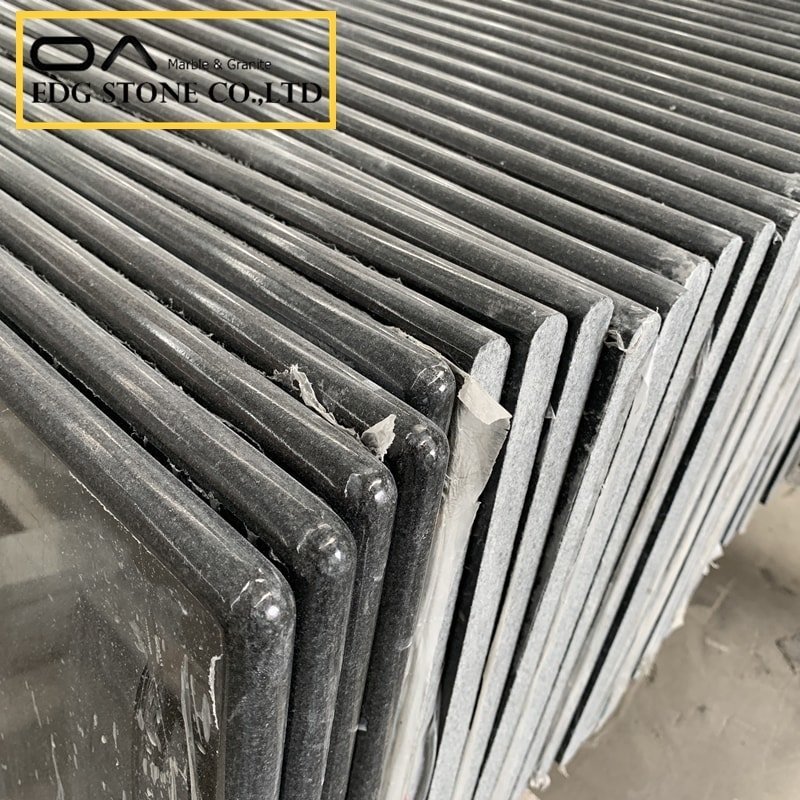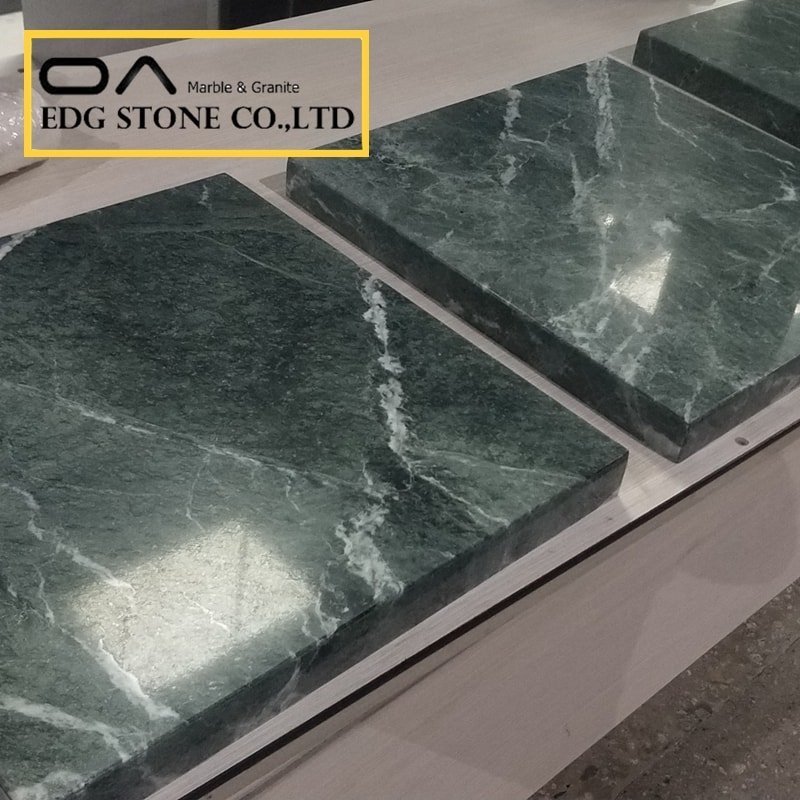Stone oil pollution is closely related to our daily life. Various types of oil substances such as edible oil, engine oil, and lubricating oil may cause oil spots and oil stains on stones.
01 Concept
Stone pollution caused by oil substances can be roughly divided into two types: oil spots and oil stains.
# 1 Oil spots
Animal and vegetable oils and mineral oils penetrate the surface and interior of the stone, forming obvious traces of pollution.
# 2 Oil stains
After the formation of oil spot pollution, due to the strong adsorption capacity of oil substances, it can adsorb dust, soil, and other pollutants in the environment, and form pollutants through physical and chemical reactions.
【Note】Oil stain is the product of untreated oil stain. The treatment of oil stains is similar to the materials and methods required for oil stain treatment, but there is one more step to clean up the surface attachments. Here, we focus on the treatment of oil spot contamination. The treatment of oil stains can be carried out on this basis.

Calacatta white quartz countertops
02 Oil spot type
Combined with daily life, we analyze several reasons for the formation of stone oil stains.
# 1 Animal and vegetable oil contamination
Mainly caused by daily dietary activities, caused by stone oil stains. For example, in kitchens, restaurants, and in the passages where vegetables are served, due to the frequent presence of animal and vegetable oils, oil pollution is easy to form.
#2 Mineral oil contamination
It mainly refers to the stone oil stain caused by engine oil, diesel, kerosene, lubricating oil, asphalt, and other substances. Such as parking lots, warehouses, factories, and other environments.
#3 Repellent factor
Solvent oil contamination by repellents is a common but easily overlooked cause. Stone repellent is generally composed of “silicone + solvent”. The solvent is extracted from coal, petroleum, and other substances, and the purity of the solvent is not enough in the inferior protection, and it contains oily components that cannot be volatile. After use, it will also cause stone oil spot pollution.
#4 Glue Contamination
Marble glue, dry hanging glue, glass glue, and other glue substances, containing glue oil, and glue powder components, is an important factors in the formation of stone oil stains. Glue oil contamination is mainly of the following types:
(1) Glass glue
Glass glue contains resin oil components, which are very permeable and easy to cause stone oil spots. Glass glue is not suitable for use on stone, in the gap treatment, avoid using glass glue to achieve the effect of stone bonding, and sealing.
(2) Inferior dry hanging glue
The resin in the inferior dry hanging glue is of poor quality and is easy to pollute the stone. And more importantly, workers use dry hanging glue when installing, to achieve the purpose of rapid drying, they generally like to mix inferior marble glue into the dry hanging glue, and under the action of a curing agent, it dries faster. This kind of rapid drying makes the glue components in the dry hanging glue not fully coagulated and solidified, and then penetrates the stone, forming oil spot pollution.

Panda white quartz countertops
(3) Marble gum
One of the glue pollution caused by marble glue is due to the poor quality of marble glue.
The other is that due to improper construction technology, workers forget to put the curing agent, or the curing dose is insufficient, which will greatly prolong the drying and curing time of marble glue, and the glue oil will also penetrate the surface and interior of the stone, forming oil stains.
Another is to apply at low temperatures, such as in an environment below 5 degrees Celsius, the curing speed of marble glue will be greatly slowed down, resulting in glue pollution.
(4) Inferior sealant
Inferior sealants contain more impurities and are easy to form oil spots.
#5 Oil stains caused by daily cleaning
It mainly refers to the pollution of stone oil spots caused by the improper use of electrostatic vacuum liquid, that is, dust-pushing oil. At room temperature, after spraying the dust push oil, the dust push should be dried for more than 24 hours before use.
If the dust push oil is not fully absorbed, it will be put into use, which will not only not have the effect of cleaning the stone, but will cause dust push oil pollution.
03 Manifestations of oil spot contamination
Animal and vegetable oils, mineral oils, and other substances penetrate the surface and interior of the stone, affecting the visual effect of the stone, and with subsequent changes, various problems occur.
1. Stone discoloration
Oil spots formed by animal and vegetable oils often appear yellowing and discoloration. The main reason is that animal and vegetable oil contains a large number of fatty acids, and after penetrating the stone, its surface reacts with oxygen in the air to produce yellowing and other discoloration. Mineral oils such as kerosene and engine oil have a deep color and strong permeability, which will cause color changes such as blackening of stone.
2. Destruction of stone
Oil spots have a strong adsorption effect, and absorb dust in the air, ground soil, and various pollutants, these substances, under the action of air, water, and other conditions, will produce unpredictable changes, the generation of harmful to the stone material, structure of the components, long-term untreated, will destroy the stone.
04 Cleaning method
Once you understand the types and causes of oil spots, it is not difficult to provide targeted solutions. We can divide them into three main categories:
01 Cleaning of animal and vegetable oil contamination
This kind of oil pollution is mainly caused by pollution in daily life. In general, this type of contamination is mostly located on the surface of the stone. When cleaning, use a special carburetor with stone cleaning agent, soap, and other materials to clean the surface. Such as VD stone degreasing and glue remover, VD stone cleaning agent, etc.
02 Heavy oil pollution
Mineral oils such as engine oils and lubricating oils have strong permeability and have a large number of pigments. This kind of oil pollution, which is generally more serious, can be called heavy oil pollution. Due to this characteristic, the cleaning process not only has the process of carburizing but also must adsorb and remove the decomposed substances from the stone through a certain method. Therefore, for the cleaning of stone heavy oil pollution, it is generally necessary to use materials such as degreasing ointment specially formulated for heavy oil pollution treatment and apply them.

Black granite countertops
03 Glue contamination
Glue oil pollution is a category that is more difficult to deal with than stone oil spot pollution. The challenges are:
(1) Difficulty
* Deep contamination
The glue oil pollution caused by glass glue, marble glue, and dry hanging glue generally runs through the thickness of the entire plate, so the pollution is very deep. Absorption and penetration of degreasing ingredients
It is relatively difficult to decompose and remove.
* Not easy to cure
If the dry hanging glue is polluted, the glue oil passes through the plate from the back of the stone and forms pollution. As long as there is glue on the back, the contamination is likely to continue, so it is not easy to cure.
* Difficult to operate
Stone glue oil contamination requires a long period of retention and penetration of cleaning materials. However, this kind of pollution will appear in various locations such as the ground and the façade, and it is difficult to retain and absorb the cleaning materials in some locations, and it is more difficult to clean the operation.
(2) Methods and techniques
* Materials & Processes
For glue oil pollution, it is generally necessary to use degreasing and glue removal materials and stone pigment removal materials, which are treated by dressing.
* Brush more
Since the glue contamination is generally very deep, it cannot be stopped just because the surface is coated with a degreaser and has achieved a temporary effect. At this time, only the oil stain on the surface is removed, and the oil stain at a deeper level will continue to regurgitate upward.
Therefore, to remove the glue, be sure to be patient and brush it multiple times.
* Temperature selection
When the glue is cleaned, the temperature should be kept above 20 degrees Celsius. The higher the temperature, the higher the penetration rate of the glue and degreasing material. In this way, the glue component in the stone can quickly react with the degreasing material and be brought out of the stone.
If the temperature is too low, the glue and degreasing material are not easy to penetrate, the reaction will be slower, and the effect will be worse. Generally, if the temperature is lower than 15 degrees Celsius, it is not recommended to clean.
* Tips
When the glue on the wall is contaminated, the degreasing material will seep down due to gravity. Therefore, when applying, remove the oil stain area, and also apply the oil removal material at 2~3cm above the oil stain.
This allows for more absorption and better results.
1. Oil pollution cleaning
* Stone type: Shandong white hemp granite polished plate.
* Cause of pollution: The ground stone was polluted due to the long-term parking of fire trucks in the garage of a fire brigade, resulting in oil leakage.
* Treatment materials: stone neutral cleaning agent, stone degreasing and glue remover, stone pigment remover, penetrating protective agent.
* Construction process:
Step 1: Use a cloth to wipe off the oil stains on the surface of the stone.
Step 2: Use a stone-neutral cleaner to scrub the residual oil stains on the surface of the stone.
Step 3: Apply with stone degreasing and adhesive remover.
Step 4: Remove the covering after 24 hours, if the stain is not completely removed, repeat the application.
Step 5: If there is still pigment contamination on the stone, apply it with stone pigment remover.
Step 6: Use a penetrating protective agent to do protective treatment.
2. Removal of dry hanging glue pollution
* Stone type: pearl granite polished plate.
* Contamination: An oily macular appeared around each dry hanging contact point, and it was found that it was caused by the dry hanging glue on the back of the stone penetrating the stone.
* Treatment materials: stone degreasing and adhesive remover, stone pigment remover, penetrating protectant
* Construction process:
Step 1: Cover the non-woven fabric or napkin on the dirt of the stone and fully moisten it with the stone degreasing and adhesive remover.
Step 2: Cover with soft plastic film, fix with masking tape, and remove the covering after 24 hours.
Step 3: In the same way, fully wet with stone degreasing and adhesive remover. Cover with soft plastic film fix with masking tape, and remove the covering after 24 hours.
Step 4: Repeat the above operations depending on the pollution removal.
Step 5: Use a penetrating protective agent for protective treatment.
06 Summary
Stone care is a very practical technique. With rich experience, we can systematically solve a full range of stone problems. I hope this sharing can be helpful to everyone.






